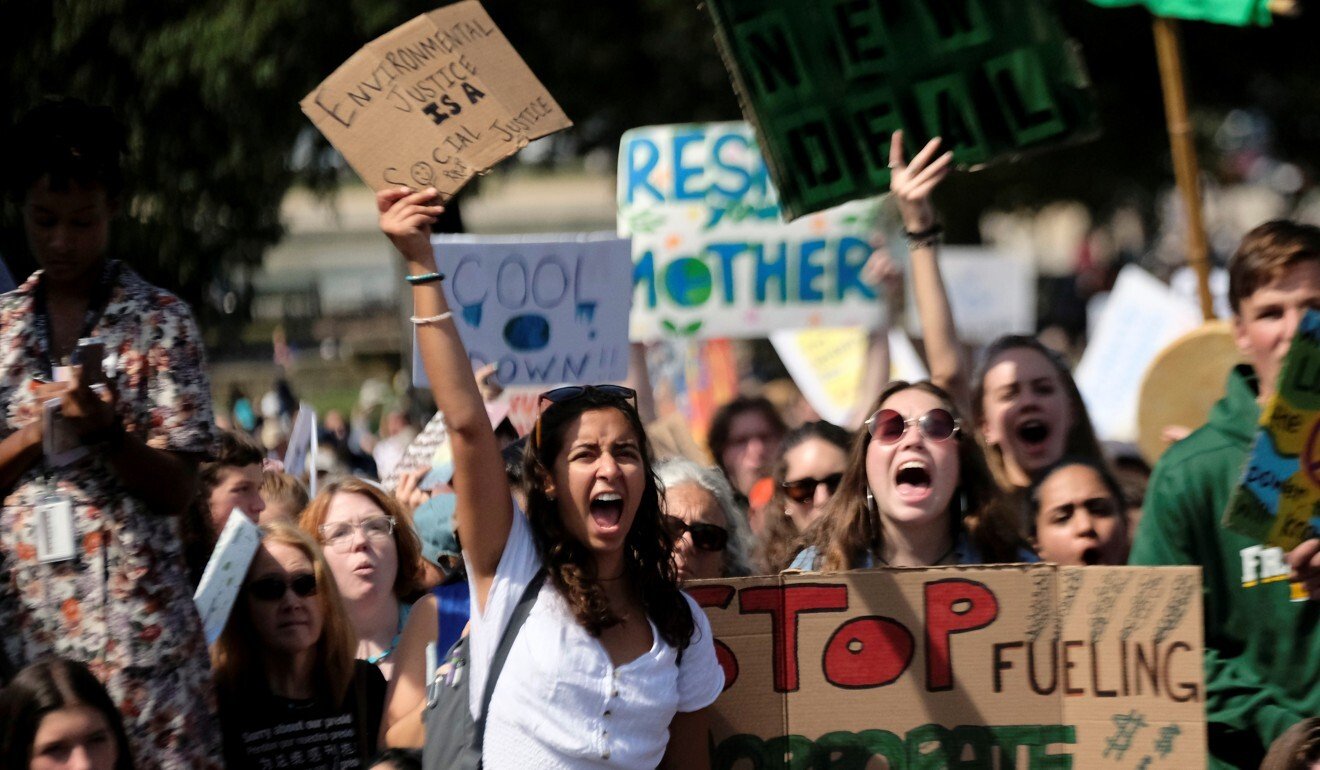
Can the US catch up with China on climate leadership?
- China has been working on its green credentials since 2013 and become a front runner in clean energy technology
- For the US to reestablish itself as a climate leader, it needs new emissions targets that are more ambitious than those Obama envisaged
Under the 2015 agreement, nations pledge to keep the increase in the global average temperature to well within 2 degrees Celsius – preferably 1.5 degrees – above pre-industrial levels, to lessen the catastrophic impact of climate change.
Some progress has been made. In 2015, the world was projected to be moving towards global warming of 3.6 degrees by 2100, but more recent analysis by Climate Action Tracker now projects a warming of 2.9 degrees. But this increase is still too high.

02:23
Bundled up for summer, European glaciers covered with blankets to slow melting from climate change
Biden has also pledged to achieve net-zero emissions by 2050. But scientists are warning that keeping global warming to just below 2 degrees by 2100 will no longer be enough. Even if global warming is kept to 1.5 degrees, the climate impact will be destructive.
Under former president Barack Obama, the US pledged ambitious targets to cut emissions – simply rejoining the Paris agreement now is not enough. For the US to reestablish itself as a climate leader, it needs new emissions targets that are more ambitious than those Obama envisaged.
In a Columbia University webinar “Prospects for climate action under the Biden administration”, Kelly Simms Gallagher, an energy and environmental policy expert at Tufts University, said: “It’s going to take a little time for the Biden administration to figure out what is possible – what policy pathways are possible and what legislative pathways are possible. It’s going to be very important to do everything that can be done to ensure we actually can meet the target.”

China doubles renewable capacity in 2020 while ramping up thermal plants
Philanthropist Bill Gates has praised China’s climate commitments and said the world benefits from its efforts to make green energy more affordable. But climate leadership also becomes difficult when one burns more coal than the rest of the world.

03:05
China vows carbon neutrality by 2060 during one-day UN biodiversity summit
Climate cooperation between China and the US – the world’s two worst polluters – will be difficult, given tense relations. To reassert US climate leadership, Biden needs not only to invest in green initiatives but also to open up a domestic conversation. Yet, in both these areas, the US has fallen behind China.
In boosting its investment in green energy, China set the stage for its leadership in clean, renewable energy, becoming the leading producer, investor and consumer of renewables. China is also home to half of the world’s electric cars and nearly all of its electric buses, and plans to boost the share of non-fossil fuels in its primary energy consumption to around 25 per cent by 2030, from a previous commitment of 20 per cent.
Still, China alone cannot curb global warming; every country needs to step up, especially the US. Despite having quickly rejoined the Paris agreement, the US is not on track to meet its emissions targets. The ideal solution is for both China and the US to build on their climate leadership, or even engage in a mutually beneficial race in climate action and green innovation.
Adeel Mukhtar Mirza is an assistant research associate at the Islamabad Policy Research Institute

